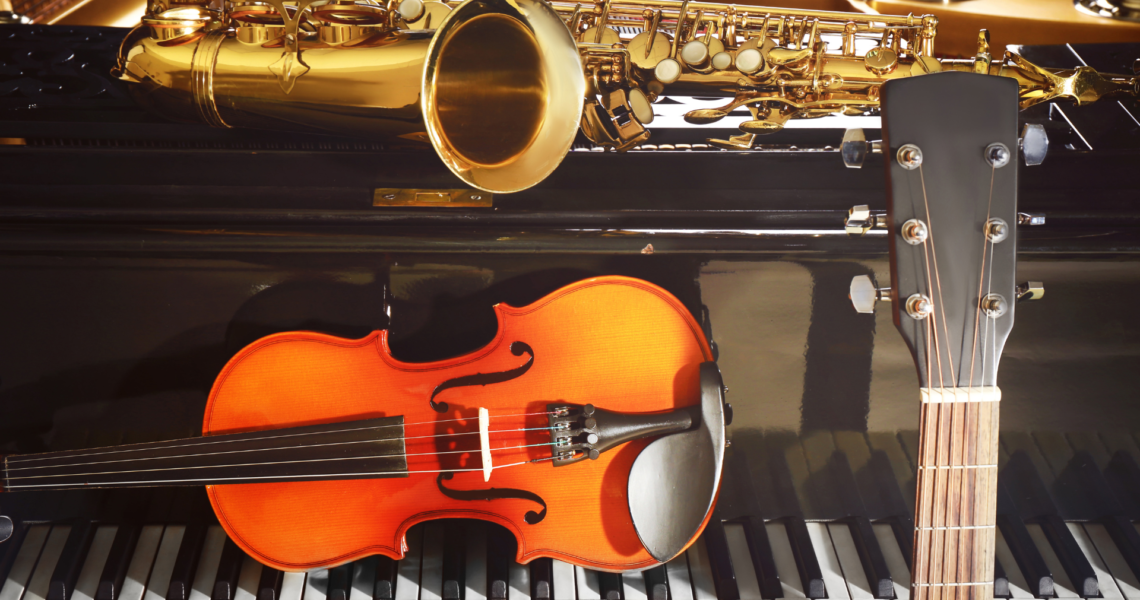Are you ready to explore the magical world of music? Whether you’re a complete beginner or an experienced musician, there’s always something new and exciting to discover in musical instruments.
From classical guitars to handpans, each instrument has its unique voice and style that can transport you to another world. This beginner’s guide will tour different musical instruments and their history, uses, and techniques. So grab your headphones and dive into the enchanting music universe!
What are Musical Instruments?
There are many different musical instruments, each with its unique sound. Here is a brief guide to some of the most popular types of musical instruments:
- The Guitar: The guitar is one of the world’s most popular and well-known musical instruments. Its simple design and string-driven sound make it easy for beginners to learn how to play. Guitars can be played solo or together with other musicians in a band.
- The Piano: Pianos are very versatile instruments, producing various sounds, including classical, jazz, and rock music styles. They can also be used for accompaniment during recitals or performances.
- The Drums: Drums are one of the essential pieces of equipment in any drummer’s kit. They provide the backbone for percussion-based music styles such as funk, reggae, and rockabilly.
- The Saxophone: Saxophones are often considered the king of brass instruments because they have such a rich and complex sound that is difficult to replicate with other types of brass instruments. Saxophones are mainly used in jazz and classical music genres.
Types of Musical Instruments
There are many different musical instruments, each with its unique sound. Here is a brief overview of some of the most common types:
- Classical Instruments: Classical instruments are typically made from wood or metal and used in classical music. Examples include the violin, cello, and viola.
- Clarinet: The clarinet is a brass instrument with two reeds producing a mellow sound. It is commonly used in classical and jazz music.
- Drums: Drums are made from various materials, including wood, metal, and rubber. They are often used in popular music to create a rhythmic foundation for songs.
How do Musical Instruments Work?
Musical instruments come in many shapes and sizes, from simple flutes to elaborate stringed instruments like the violin. While some are played with the fingers, others require a bow or other device to produce sound. This article will explore what makes musical instruments work and how they have sound.
For an instrument to create sound, it needs air flowing through it. The musician creates the sound by pressing down on the string with their finger or hand (or using a bow) and vibrating it back and forth. This air movement causes vibrations in the surrounding wood, which your ear converts into sound waves.
A few things determine how loud an instrument will sound: its size, shape, construction materials, and how well it is tuned. Different types of wood also affect how an instrument sounds – for example, violins are typically made out of wood from the African sapphire tree, which gives them a bright tone. And while all musical instruments need some tuning – whether regular maintenance or re-stringing – some require more attention than others due to their delicate construction.
Benefits of Playing an Instrument
- Developing Communication and Teamwork Skills: Playing an instrument can help you improve your communication and teamwork skills. You’ll need to work with other musicians to create a song or piece of music, so learning to cooperate and communicate effectively is valuable.
- Enhancing Musical Abilities: Playing an instrument can also help you develop your musical abilities. You’ll learn how to play the notes correctly and use basic harmonic principles by practicing regularly. This will allow you to play more complex pieces of music, increasing your enjoyment of playing music overall.
- Building Self-Confidence: Playing an instrument can also help build self-confidence. Playing music makes you feel like you’re part of a community, giving you a sense of security and empowerment. When you feel good about yourself as a musician, it’s easier to participate in activities that challenge you outside of music (such as school or work).
- Developing a Hobbies: Playing an instrument can also be a fun way to develop your hobbies. When you’re not practicing or playing music, you can look for new music to listen to or explore different music styles. This can help you develop an interest in music you may have yet to discover.
If you’re a beginner musician and want to learn more about the world of musical instruments, this beginner’s guide is for you! In it, we’ll discuss different types of musical instruments, how they work, and what makes them unique. We’ll also offer tips on choosing the right instrument for your playing style and help you start learning some basic chords and melodies. So whether you’re just starting or have been playing for years but want to improve your skills, this guide is for you!

